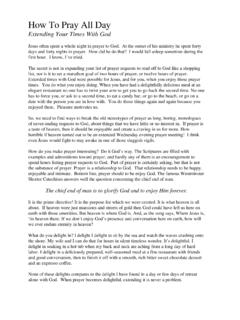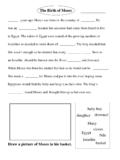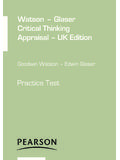Transcription of Dynamics and Terms - Mike McFerron
1 Dynamics and Terms Music Fundamentals 14-119-T. As I have mentioned earlier, the three basic building blocks of music are rhythm, pitch, and timbre. However, these elements would be less meaningful if composers simply wrote musically, play this note at this speed on this instrument. How a musical event is played can alter the mood, emotion, and overall sound of the music. In fact, the performance of the note is what really defines the character of the music. What is Notation?: Up to this point, we have really spoken about the mechanics of music in rather abstract Terms . We must now begin to look at the practicality of music. The goal of a composer should be to place enough information in the musical score (sometimes too much) for the performer to get the desired sound.
2 Sometimes this is very difficult to verbalize, and indeed, music is extremely subjective from a performance standpoint. As an example, compare and contrast two performances of the same piece of music. You will find obvious differences in the performance even though you are listening to the same composition. Whether you are listening to Willie Nelson singing a Paul Simon tune, listening to Placido Domingo vs. the Smashing Pumpkins sing the Star-Spangled Banner, or comparing a record- ing of the Cleveland Symphony and the Chicago Symphony Orchestra playing Brahms, you will notice several differences in the performance practice. Notation is simply a guidebook for performers. It is actually very imprecise, and can be interpreted many different ways.
3 How boring music would be if notation were extremely precise! How interesting is hearing Beethoven's 9th Symphony exactly the same every time? Obviously, it would become monotonous, and it probably would not have survived as one of the greatest works of all time. The Imprecision: Of course with technology today, it is possible to composers to specify exactly how an event should be played. Composers can define the amplitude, frequency, and timbre envelopes for every single sound event to an infinite degree. We can specify and program rates of vibrato into a computer. Of course, a computer can be perfect. Fortunately, or unfortunately depending on your musical out- look, humans are not this precise. Therefore, it stands to reason that our notation does not need to be extremely precise.
4 Please note that this does not mean that composers shouldn't try to convey musical thoughts to a performer the best of their ability. It simply means that composers must work within the limitations of the performer. One of the most crucial aspects of playing a musical event is the amplitude. How loud or soft a note or passage is played can really effect the mood and emotional quality of the piece. For example, sing the first verse of Amazing Grace three times. The first time, try to sing it at a moderate level throughout without any amplitude inflections. The second time, sing the song very softly throughout. Finally, sing Amazing Grace at first very soft, and gradually become louder until you reach Was blind, but now I see. Sing this last sentence very softly.
5 How are each of the emotional responses different for these three versions? In notation, we have subjective markings that give the performer an idea of how loud or soft to perform. These markings are called, Dynamics [see figure 1]. All of these Terms are based on Italian words. They are subjective because they don't specify an absolute value. For example, if the Dynamics & Articulations - page 1. performer is asked to sing piano, the Figure 1. performer is not given an amplitude level. Marking Italian Definition We don't tell a performer to sing 6. decibals, for instance, for several reasons. pianississimo extremely soft First of all, we would then have to give them a reference. Second, and more pianissimo very soft important, what performer could actually be that precise without the help of some electronic monitoring device.
6 Even then if piano soft it were possible for the performer to maintain the same level for the entirety of mezzo-piano moderately soft the musical event, the result would most likely be unnatural and boring. It wouldn't be human! mezzo-forte moderately loud In addition to telling the performer the forte loud amplitude of how an event is to be per- formed, Dynamics can also tell the per- former the mood of how something is to be fortissimo very loud performed. Additionally, when looking at Dynamics , performers must take into ac- fortississimo extremely loud count the context. For example, the dy- namic range for some works, like Mozart's Missa Brevis in F Major may only be from piano to forte. In other works like Tchaikovsky's 6th Symphony, the dynamic range is from pianississississississimo (6 p's) to fortississississississimo (6 f's)!
7 This doesn't mean that the Tchaikovsky symphony will necessary be played louder or softer (although it may due to the size of the orchestra), but that Tchaikovsky really tried to be more accurate in communicating to the performer his desires. Where Mozart has only four dynamic markings (piano, mezzo-piano, mezzo- forte, and forte), Tchaikovsky has many. In other words, Tchaikovsky tries to control how his music is performed to a greater degree. To add more interest, composers ask performers to change their Dynamics over time [see figure 2]. Again, the majority of these Terms today are now written in Italian, which are provided in the figure below, but other composers wrote in their vernacular. Today, many English-speaking composers have adopted a variety of methods.
8 Gustav Mahler (1860-1911) for example wrote paragraphs of text in his musical scores in an attempt to give as much information to the performer as necessary. Today, composer Brian Ferneyhough is an excellent example of a composer who gives numerous perfor- mance indications to performance. These include not only Dynamics , but also sentences about balance and what a performer should listen for in the other parts. Not surprisingly, Ferneyhough has been very successful in receiving excellent performances of his music. Dynamics & Articulations - page 2. Figure 2. Dynamic Indications Italian Term Abbrev. Definition crescendo cresc. gradually become louder diminuendo / diminish dim. gradually become softer Tempo indications Italian Term Abbrev.
9 Definition Accelerando accel. accelerate ritard rit. slowing down stringendo string. accelerate and become louder rallentando rall. winding down . A Tempo __ return to tempo or at the tempo Mosso / moto __ motion Basic Italian indications Italian Term Definition poco a poco little by little (eg. cresc. poco a poco). molto much, very (eg., molto rit = slow down a lot). con with (con motto =with motion). pi more (pi mosso = more motion). meno less (meno piano = less soft). morendo fading away / dying away esspressivo expressive dolce sweetly primo prime/original ( primo tempo = at the original tempo). Beyond Amplitude: In addition to Dynamics , composers employ other symbols that tell performers somewhat subjective ways of performing a musical event [see figure 3].
10 Articulations tell a performer the character of a particular note. Due to the extreme subjectivity of their meanings, these markings are often Figure 3. Some Basic Articulations Symbol Pronunciation Location Definition > accent attached to note emphasize the note . staccato attached to note play note shortly _ tenuto attached to note elongate note fermata attached to note hold note cesura attached to staff pause before continuing comma attached to staff pause or breathe interpreted differently. Many times, performers must look to the historical context of the music to determine the best way to perform articulations. For example, an accent placed above a note in a Dynamics & Articulations - page 3. 20th century score will generally be performed much more vigorously than an accent placed above a note in a score from the Classical era.








